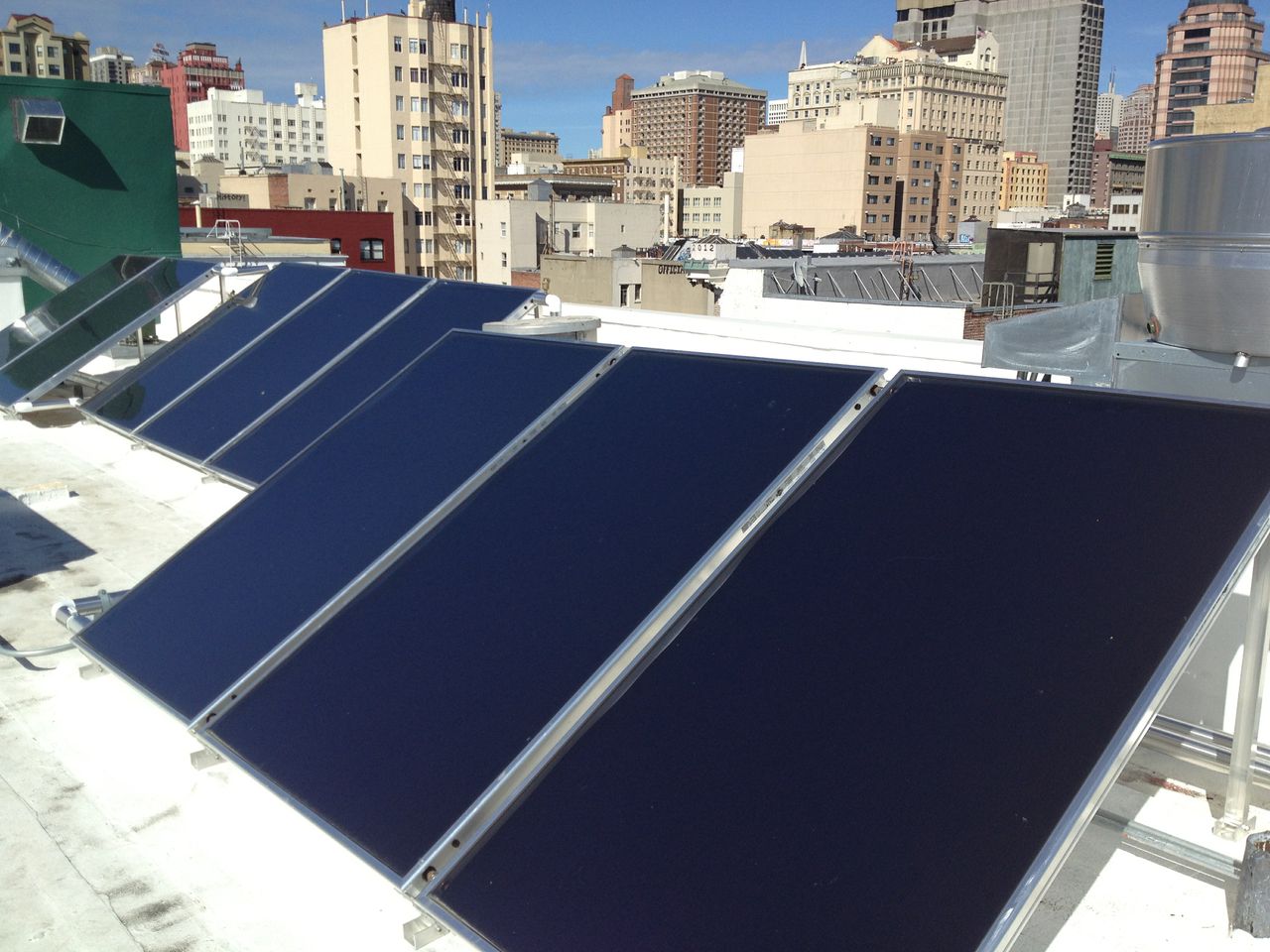Did You Know? Solar Heating & Cooling Fast Facts
- Solar heating systems are affordable for families. The return on investment can be as little as 3-6 years. Commercial systems help companies reduce and manage their energy bills, managing long-term costs. Meanwhile, fossil fuel prices fluctuate considerably and are expected to rise significantly over the next decade.
- Water heating, space heating, and space cooling accounted for 72 percent of the energy used in an average household in the U.S. in 2010 ‐ representing a huge market potential for solar heating and cooling technologies!
- In 2010, the U.S. saw 35,464 solar water heating systems and 29,540 solar pool heating systems installed, heating a total of more than 65,000 homes, businesses and pools.
- Since 2010, the U.S. has also produced some record-breaking solar air heating installations, with systems ranging up to 10,000-50,000 ft2 on a single wall being installed across the country, showing the large scale energy opportunity in addressing space/ventilation heating.
- Three out of four (74 percent) Americans agree, ‘the growth of the solar water heating industry will produce jobs and help the American economy.’ This support is strong across regions of the country and across party lines.
Basics of Solar Water Heating Technology
Solar water heating systems can be installed on most homes in the U.S., and are comprised of three main elements: the solar collector, insulated piping, and a hot water storage tank. Electronic controls can also be included, as well as a freeze protection system for colder climates. The solar collector gathers the heat from solar radiation and transfers the heat to potable water. This heated water flows out of the collector to a hot water tank, and is used as necessary. Auxiliary heating can remain connected to the hot water tank for back‐up if necessary.
Basics on Solar Photovoltaic + Thermal Technology
Solar photovoltaic + thermal (PVT) panels are enhanced solar electric panels that generate electricity and heat water using one solar module on the same valuable roof space. The most common type of PVT collector cools the electrical photovoltaic components for improved electricity production while at the same time providing useful thermal energy. Because of this, PVT panels can increase the electrical output of the module by up to 20%. System sizes range from small to industrial scale. Including the thermal energy, PVT panels can generate up to four times the power of a PV module alone.
Basics of Solar Air Technology
Solar air heating is a solar thermal technology used for commercial and industrial buildings in which the energy from the sun is captured and used to heat air. It addresses one of the largest usages of building energy in heating climates, which is space heating. It is also used for agricultural drying.
Most solar air heating systems are wall-mounted, which allow them to capture a maximum amount of solar radiation in the winter. Specially perforated solar collector panels are installed several inches from a south facing wall, creating an air cavity. The air is generally taken off the top of the wall and is heated anywhere from 30-100 degrees F above ambient on a sunny day. The solar heated air is then ducted into the building via a connection to the HVAC intake.
In colder climates with the possibility of freezing temperatures, an indirect system is used. An antifreeze solution, such as non-toxic propylene glycol, is heated in the solar collector and circulated to the hot water storage tank via a heat exchanger. The potable water in the storage tank is warmed by the hot, antifreeze‐filled heat exchanger, and the heated water can then be used as necessary, while the cooled glycol is piped back to the solar collector to be heated again.
Another common type of solar water heating system design for cold climates is called “drainback.” This type of solar energy system typically uses water as the heat transfer fluid, and is designed to allow all of the water in the solar collector to “drain back” to a holding tank in a heated portion of the building it is used on. When no sunlight is available for heating, the solar pump turns off and the water flows into the drainback tank by means of gravity.
No matter which type of solar energy system is employed, a properly designed and installed soalr water heating system can be expected to provide a significant percentage (40 to 80 percent) of a building’s hot water needs.
How Solar Water Heating Collectors Work
Solar water heating collectors produce heat energy, distinguishing them from photovoltaic (PV) modules which produce electricity. There are several types of collectors: flat plate, evacuated tube, Integral Collector Storage (ICS), thermosiphon, and concentrating. Flat plate collectors are the most common type of collector in the U.S.; copper pipes are affixed to an absorber plate contained in an insulated box that is covered with a tempered glass or polymer coverplate.
Evacuated tube collectors consist of rows of parallel, transparent glass tubes that have been “evacuated” of air, creating a highly efficient heat insulator for the fluid that runs inside the length of the tube. Evacuated tube systems are generally used when higher temperatures or higher volumes of water are needed, as well as for process heating and solar air conditioning systems.


